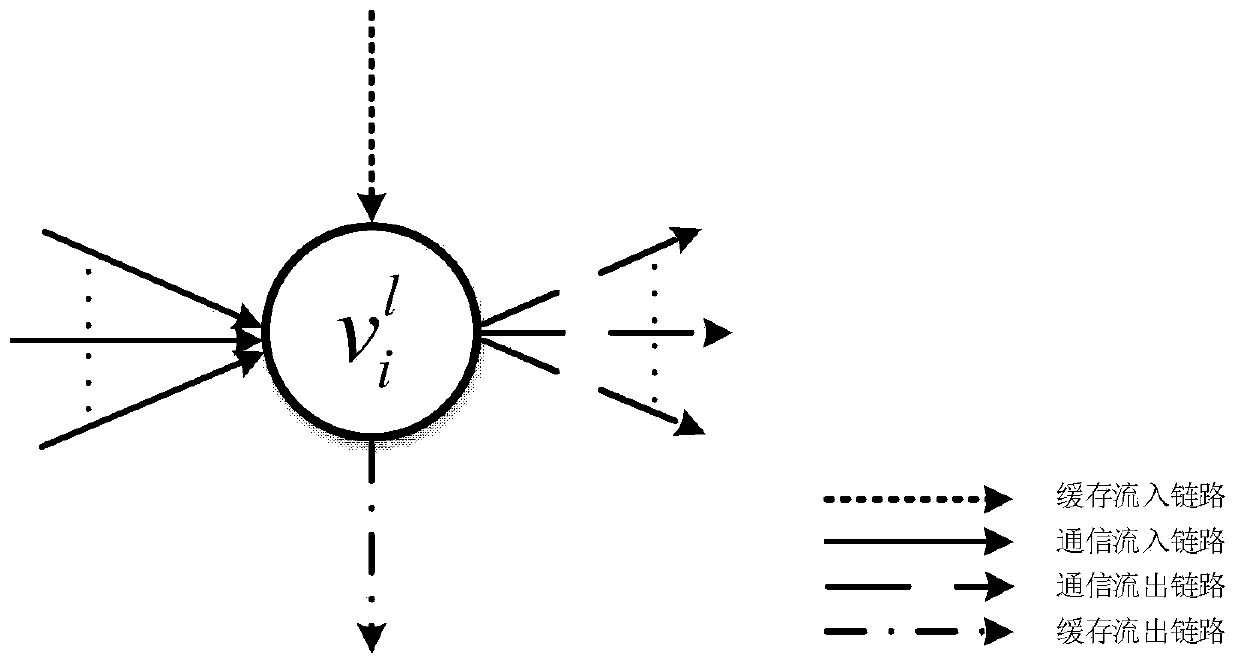Time Division Based Maximum Flow Routing Method for Transceiver Constrained Spatial Information Networks
A space information network, information network technology, applied in the direction of data exchange network, digital transmission system, electrical components, etc., can solve problems such as limitations
- Summary
- Abstract
- Description
- Claims
- Application Information
AI Technical Summary
Problems solved by technology
Method used
Image
Examples
Embodiment Construction
[0045] The present invention will be described in further detail below in conjunction with the accompanying drawings.
[0046] refer to figure 1 , the specific implementation steps of the present invention will be further described in detail.
[0047] Step 1, construct the time expansion graph of the spatial information network.
[0048] Taking the time period in which the topology of the spatial information network maintains the same state as the time interval, divide an operating cycle [0, T] of the spatial information network equally with τ as the time length, and obtain L equal-length time intervals, that is, T =τ·L, record the lth time interval as time interval l according to the time sequence, assuming that the network topology state under the condition of unlimited transceivers remains unchanged in each time interval, only at the moment of time interval switching change.
[0049] The time expansion graph G(V) of constructing the spatial information network C ,E), wh...
PUM
 Login to View More
Login to View More Abstract
Description
Claims
Application Information
 Login to View More
Login to View More - R&D
- Intellectual Property
- Life Sciences
- Materials
- Tech Scout
- Unparalleled Data Quality
- Higher Quality Content
- 60% Fewer Hallucinations
Browse by: Latest US Patents, China's latest patents, Technical Efficacy Thesaurus, Application Domain, Technology Topic, Popular Technical Reports.
© 2025 PatSnap. All rights reserved.Legal|Privacy policy|Modern Slavery Act Transparency Statement|Sitemap|About US| Contact US: help@patsnap.com



